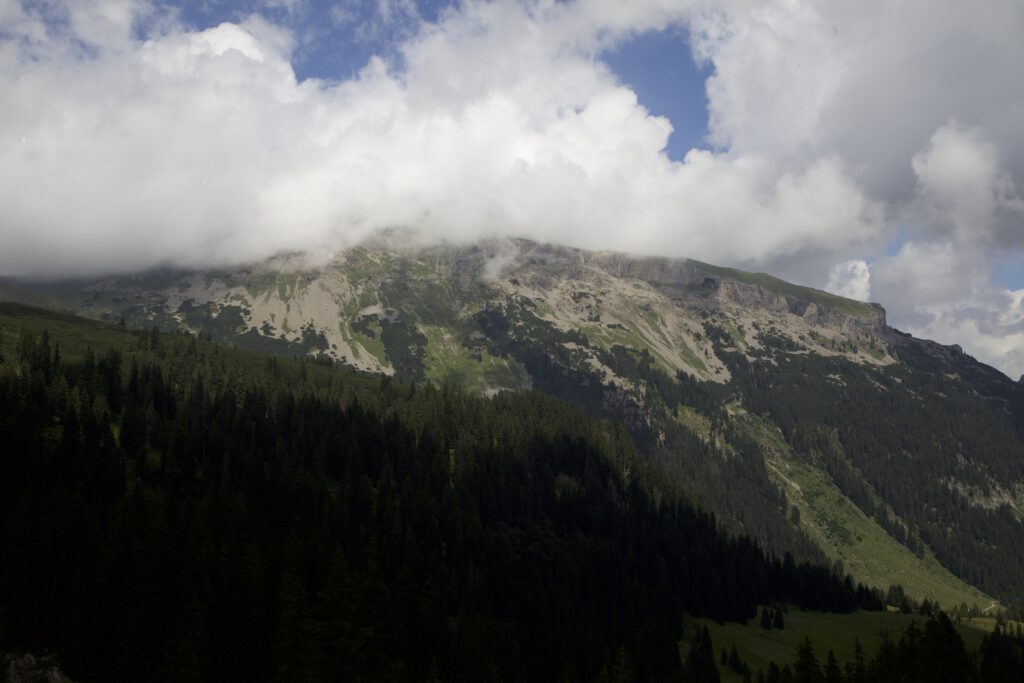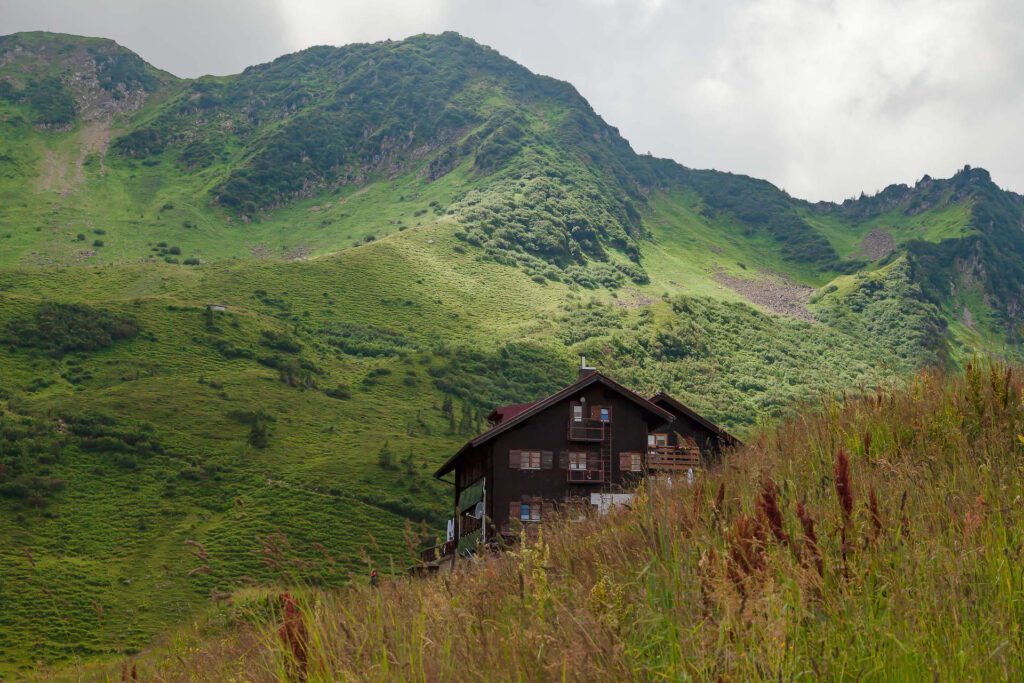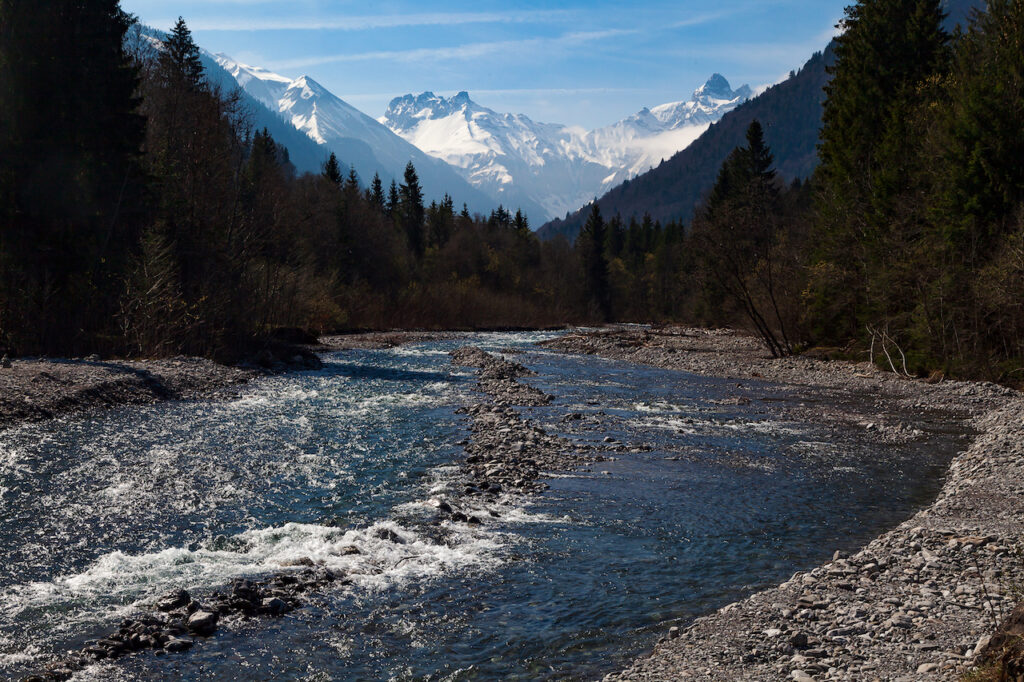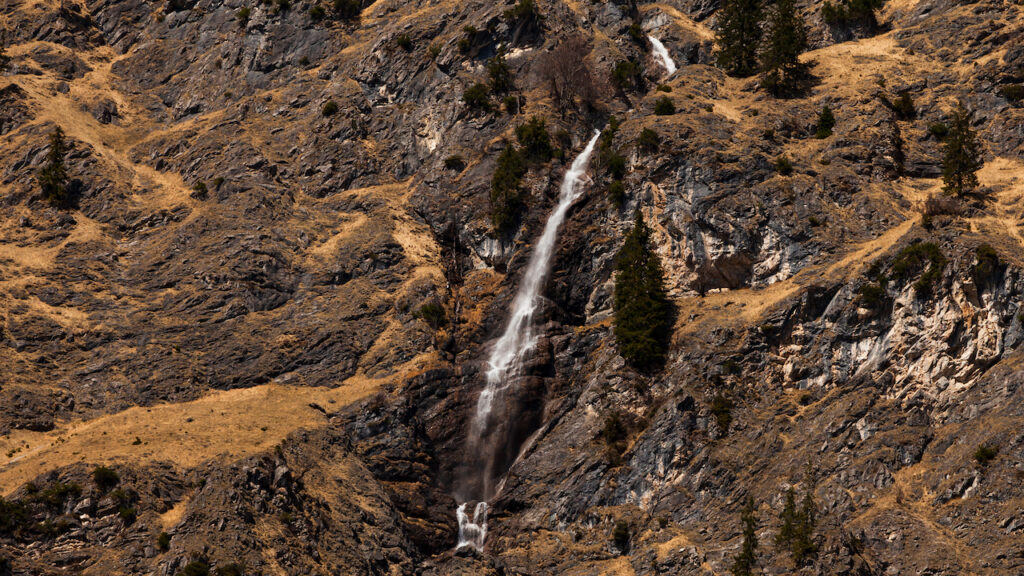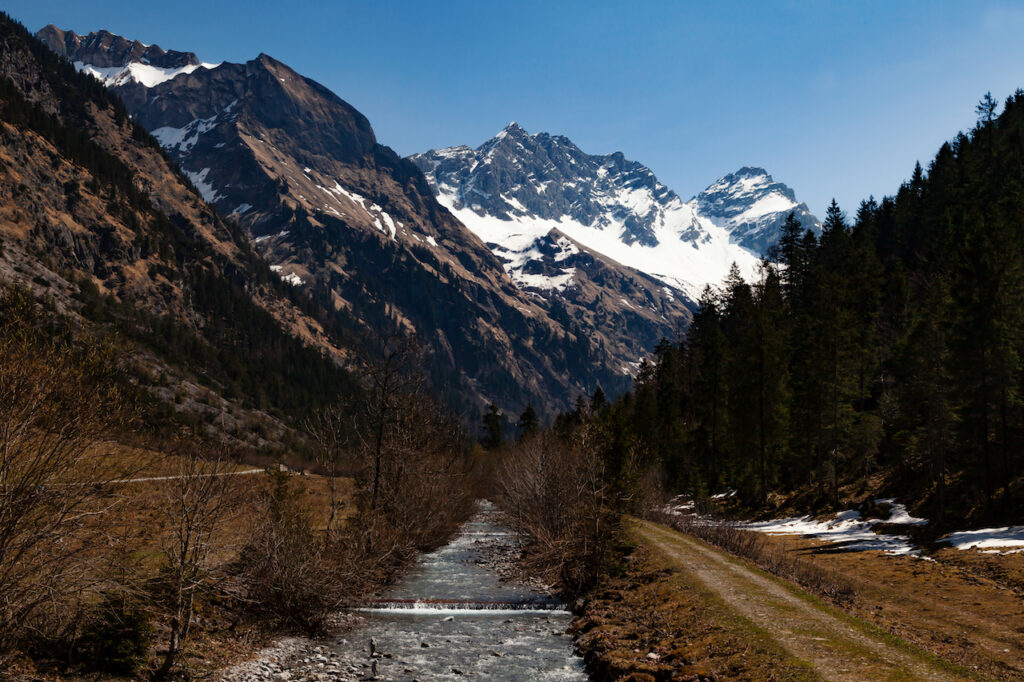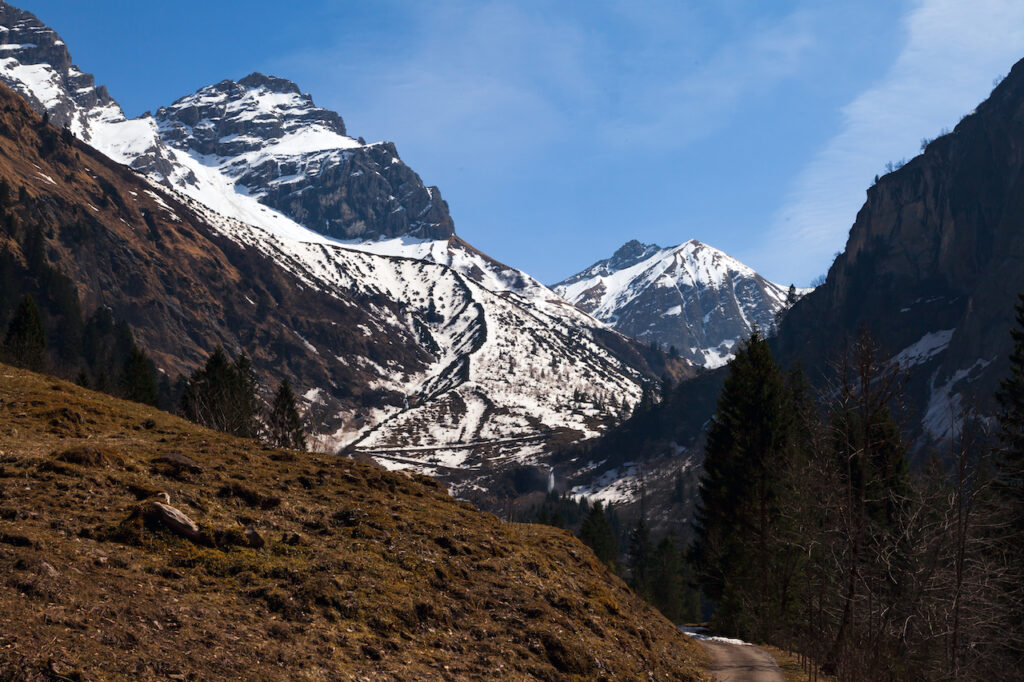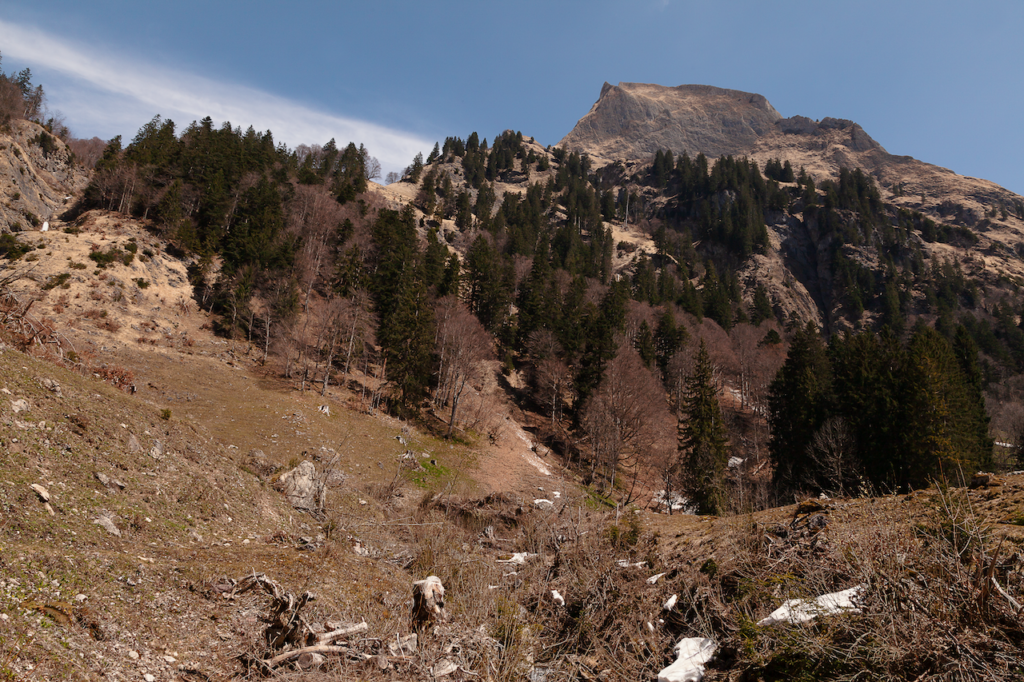Majestätische Berge und ein Zauberwald – Das Schwarzwassertal in Österreich
von Peter Engelmann, 28 Juli 2022
Das bekannte Kleinwalsertal im österreichischen Bundesland Vorarlberg ist im Winter wie im Sommer ein beliebtes Ausflugsziel. Es gehört zwar zu Österreich, man kommt aber nur von Deutschland aus dorthin. Das Kleinwalsertal ist eine österreichische Enklave. Der Name Walser bezieht sich auf die Geschichte: Die erste Besiedlung erfolgte von Süden, aus der Schweizer Region Wallis.
Bei Oberstdorf beginnt das Tal mit seinen vielen Aussichtspunkten. Die Hauptorte im Hochgebirge sind Mittelberg, Hirscheeg und Riezlern. Am Ende des Talschlusses liegt Baad. Vom Kleinwalsertal aus führen viele Wanderwege in wunderschöne und spektakuläre Hochtäler mit Almen. Eines davon ist das Schwarzwassertal. Dieses fantastische Tal bietet viele hervorragende Motive für Foto- und Videografen. Aufgrund seiner herausragenden geologischen Formationen und seiner reichen Flora ist es ein Muss für jeden Naturinteressierten. Auf dem Weg zur Melköde-Alm liegt ein Torfmoor.
Wildnis rund um den Ifen
Ein guter Ausgangspunkt für einen Ausflug ins Scharzwassertal ist der Parkplatz bei der Ifenbahn und der Auenhütte. Eine Bergstraße verbindet die Talstation der Ifenbahn, Hirschegg und Riezlern. Das Kleinwalsertal verfügt über ein hervorragendes öffentliches Verkehrsnetz. Busse kommen oft, und es gibt eine Busverbindung nach Oberstdorf in Deutschland; eine gute Alternative, wenn man das Auto nicht nutzen möchte. Der Wanderweg beginnt am Ende des Parkplatzes auf der linken Seite des Bahnhofs und führt zu einem See, der in magischen Grün- und Blautönen schimmert. Dieser Stausee liefert im Winter das Wasser für die Beschneiungsanlagen. Zwischen dem See und der Alm Melköde (wo Sie im Sommer essen und trinken können), liegt auf der linken Seite des Weges ein beeindruckender, unberührter Bergwald. An manchen Stellen wirken massive Felsen wie antike Relikte. Auch wenn es sehr bequem ist, dort zu laufen – und natürlich sind hier oft viele Wanderer –, ist es ein Gefühl, als würde man in die Wildnis eintreten.
Über dem Tal thront der einschüchternde Hohe Ifen. Dieser Berg ist eine weitere großartige Sehenswürdigkeit und ein sehr interessantes geologisches Phänomen. Der Hohe Ifen ist mehr als 2200 Meter hoch. Seine raue Tafelbergform ist für die Alpen recht ungewöhnlich. Mit seiner wilden und widerspenstigen Felswand bietet er einen spektakulären Anblick. Es ist leicht vorstellbar, dass unsere Vorfahren ihn als heiligen Berg oder rituellen Ort gesehen haben könnten. Besonders interessant und geheimnisvoll wirkt er, wenn es keinen blauen Himmel, aber einige Wolken und Nebel gibt. Wenn Nebelschwaden die Berge hinaufsteigen oder Wolken den Gipfel umspielen, kommt die wilde Natur des Ifen-Gebiets noch stärker zum Vorschein.
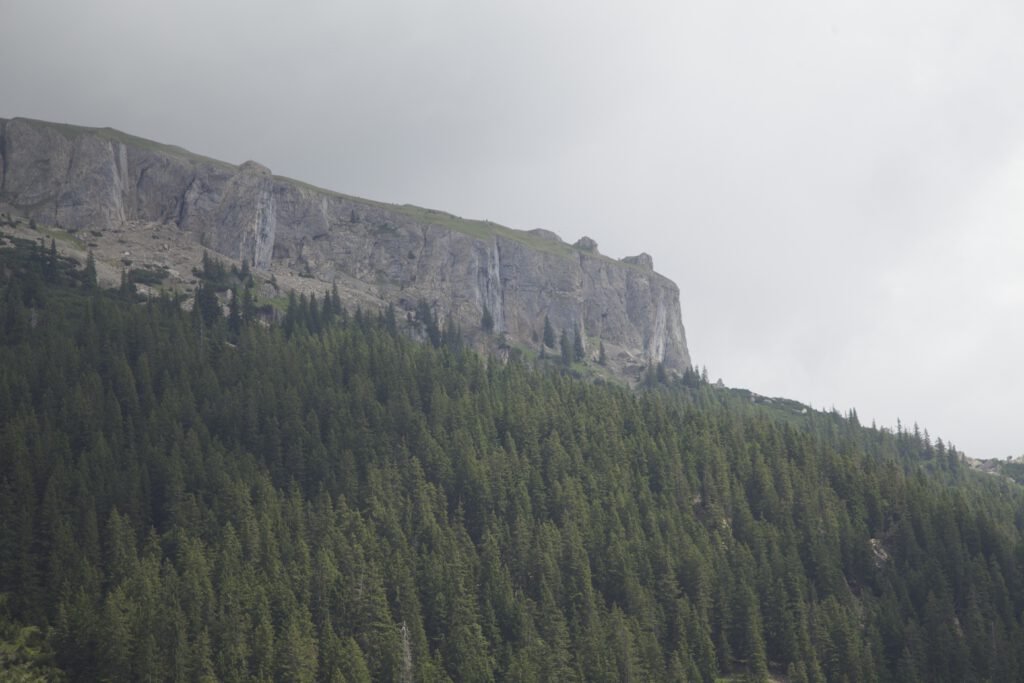
Die Weiden
Der Weg steigt langsam an. Wenn Sie den Bergwald fotografieren möchten, gibt es viele Motive entlang des Weges. An einer Stelle führt ein kleiner Pfad nach links zu einem leider schon ziemlich verwitterten und zugewachsenen Bildstock, dessen Heiligenbild kaum noch zu erkennen ist. Es lohnt sich dennoch, sich ein paar Minuten Zeit zu nehmen, um dorthin zu gehen, denn der Bildstock befindet sich auf einem kleinen Hügel im Berg, mit Blick auf eine wilde Gegend mit einigen weiteren großartigen Aussichten.
Einige Minuten später, zurück auf der Hauptwanderung, öffnet sich die Landschaft auf Wiesen und Weiden. Kommt man an einem Tag hierher, an dem sich die letzten Regenwolken verziehen und ein Wechselspiel aus Sonnenlicht und Wolken herrscht, ist das wie eine Szene aus „Der Herr der Ringe“. Der Wasserfall hinter dem Weideland verstärkt den Eindruck. Diese Almen sind einzigartig, da sie teilweise zum Torfmoor gehören. Hier wird schon seit sehr langer Zeit Landwirtschaft betrieben. Der Bergbauernhof Melköde geht auf das Jahr 1566 zurück. Zu seiner langen Geschichte gehören auch einige katastrophale Ereignisse: Lawinen zerstörten ein paar Mal Gebäude. Bei einem dieser Ereignisse starben 20 Menschen. Die Wildnis ist hier immer nah, und man darf nie vergessen, die Naturgewalten zu respektieren. Die Almen liegen auf einem Hochplateau im Schwarzwassertal auf 1350 Meter ü. M. Das ermöglicht besondere Lichtverhältnisse und intensive Farben. Die Wiesen sind tolle Motive.
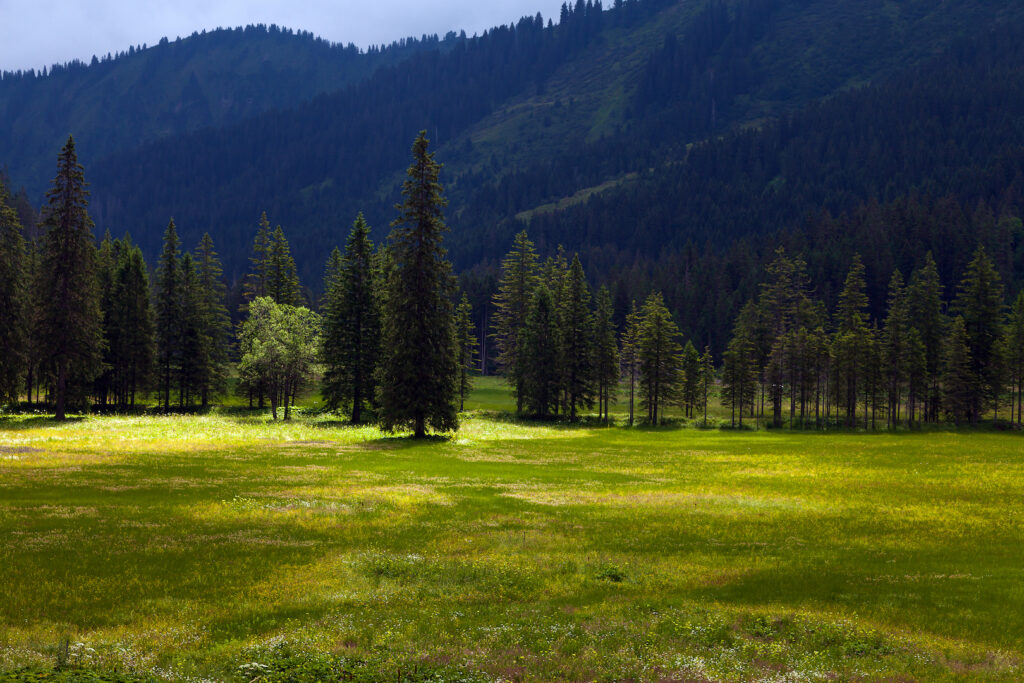
Wanderung zur Schwarzwasserhütte
Nach einer Einkehr beim Bauern- und Gasthaus Melköde führt der Weg in steileres Gelände. Es ist nicht schwierig weiterzugehen, aber der Weg verändert sich nun und erfordert etwas mehr Ausdauer. Dabei ist er in ausgezeichnetem Zustand, und man muss die schwere und ausdauernde Arbeit der Menschen anerkennen, die sich um diesen großartigen Weg in die Berge kümmern. Denken Sie dennoch daran, dass es sich ab hier um alpines Gelände handelt und nicht mehr um einen Ziehweg. Es gibt einige Abschnitte, in denen erhöhte Aufmerksamkeit erforderlich ist. Bei Regen ist dieser Weg rutschig.
Auch die Klima- und Wetterbedingungen tragen zu der besonderen Qualität des Schwarzwassertales bei. Die Temperatur ist im Sommer gemäßigt, und es regnet viel. Im Winter fällt Schnee. Das sind gute Voraussetzungen für eine einzigartige Vegetation mit einer Vielfalt an Pflanzen, viele von ihnen streng geschützt. Das Schwarzwassertal ist Teil des Pflanzenschutzgebiets rund um den Hohen Ifen.
Der Weg öffnet sich wieder und die urige Schwarzwasserhütte kommt in Sicht. Hier ist ein idealer Ort, um weitere Bilder von beeindruckenden Ansichten zu machen: auf der linken Seite imposante Grasberge, gegenüberliegend erneut das Ifenplateau. Auch wenige Meter von der Almhütte entfernt gibt es tolle Möglichkeiten, Fotos oder Videos zu machen.
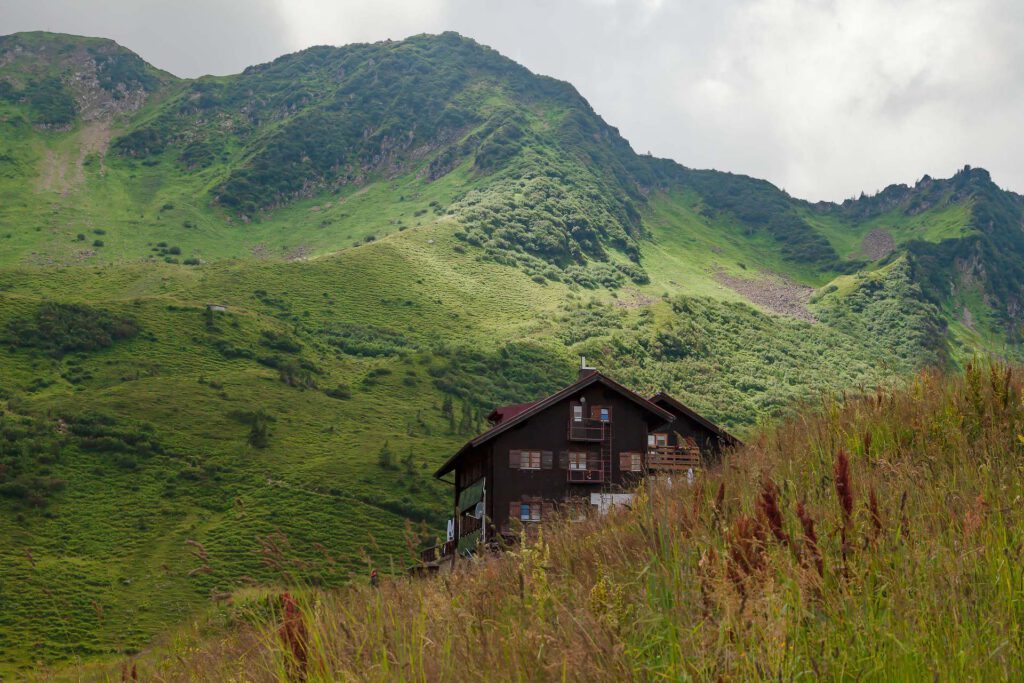
Die Schwarzwasserhütte geht Jahr 1914 zurück. Betrieben wird diese gemütliche Almhütte vom Deutschen Alpenverein Sektion Schwaben mit einem freundlichen und kompetenten Team. Sie ist auch im Winter geöffnet und bietet Übernachtungsmöglichkeiten, für die Reservierungen erforderlich sind. Die Schwarzwasserhütte ist Ausgangspunkt für mehrere Wanderungen zu den Berggipfeln. Bedenken Sie, dass es sich um hochalpines Gelände handelt und bei Ausflügen zum Hohen Ifen Trittsicherheit ein Muss ist.
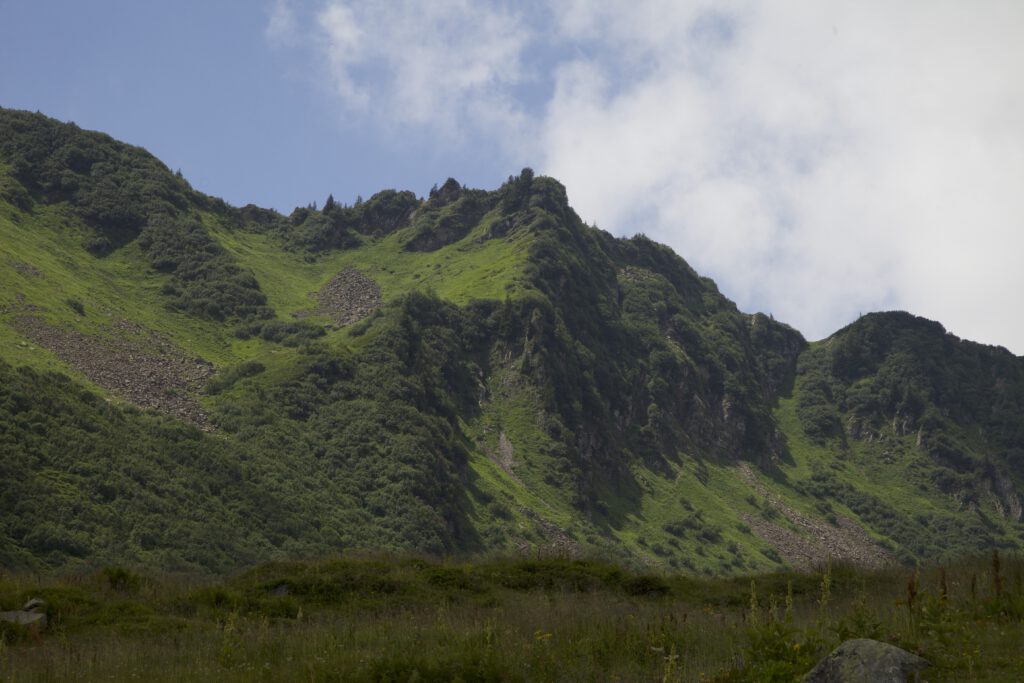
Schönheit der Wildnis
Auch wenn es nur ein kurzer Aufenthalt ist, bleibt genug Zeit, um diese himmlische Landschaft zu genießen – eine Landschaft, die raue Wildnis und ergreifende Schönheit miteinander verbindet.
Das Kleinwalsertal hat viel zu bieten. Weitere spektakuläre Ziele sind die Breitenbachklamm auf deutscher Seite und das Gottesackerplateau. Dieses Plateau, eine geologische Formation, liegt auf der anderen Seite des Hohen Ifen.
Hinweis: In einigen Führern gibt es auch eine Wanderung namens „Schwarzwassertal“, die von der Auenhütte nach Mittelberg hinunterführt. Diese führt in eine weitere Schlucht und ist ebenfalls sehr interessant.
Deutsche Bearbeitung: Redaktionsbüro Niemuth
